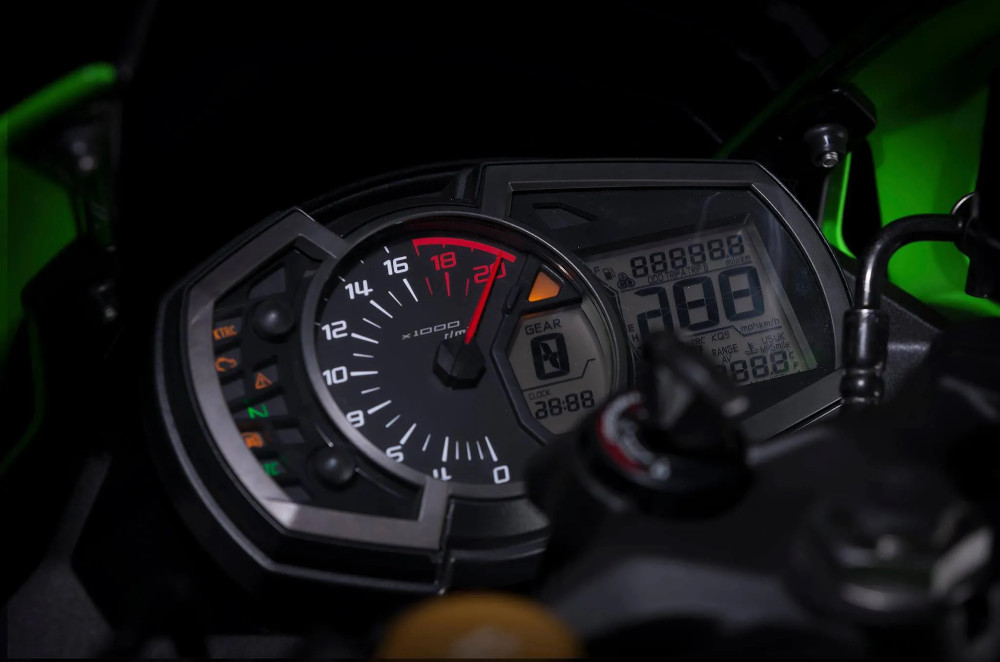What is a rev limiter and what does it do?
Certainly, the limiter does more than just make noise.

The unique sound of a motorcycle's rev limiter may be recognizable to you. It makes a ratatat sound, and you'll often see idiots who think they're cool repeatedly banging their engines on the limiter. Rev limits are there for the same reason as speed limits, and that's because terrible things are more likely to happen the faster you go. For comparison, excess speed on the road can make it more difficult to manage a turn or stop in case of an emergency. Likewise, excessive velocity on the part of the components inside your engine can result in catastrophic failure and a hefty repair bill.
The piston and connecting rod contain mass, and consequently carry a lot of inertia and momentum when in motion. This means they resist changes in speed and direction. As the engine revs higher, the piston tries harder to detach itself from the connecting rod. Meanwhile, the connecting rod wants to pull itself away from the crankshaft. If these excessive engine speeds are sustained, the metal will fatigue , and the engine will eventually blow itself to smithereens.
It saves your pistons, connecting rods, and crankshaft

Consider the pistons of a high-revving engine like the Kawasaki Ninja ZX-25R. With a rev limit of over 17,000 rpm, it's easy to envision how much velocity (and heat) each piston is exposed to. It accelerates from a complete halt at the bottom of the stroke to the top of the stroke 17,000 times per minute.
Naturally, that instantaneous acceleration imparts immense pressure on the piston, crankshaft, and connecting rod. While the complete system only weights a few grams at rest, the piston's mass grows enormously in relation to the speed at which it's spinning. To put that in perspective, that's the same weight as the full bike itself, weighing up and down on the internals of your engine. With that in mind, it's simple to understand why engines would have such a high propensity for failure without a rev limiter.
It protects your precious valvetrain

Apart from the bottom end, consisting of your crank, connecting rods, and pistons, your valves are also at risk of destruction if a rev limiter is removed or uninstalled from your engine. If the engine is revved high enough, the momentum of the valvetrain components, which include your valves, rocker arms, cams, and followers, may be too strong for the springs to withstand, and the valves may not follow the cam's motion—a prescription for catastrophe.
This disastrous phenomenon is known as valve float, and it's pretty much a death sentence for your engine. If the valve is open for too long, it may come into contact with the piston as it rises inside the cylinder. Your engine will normally make a loud, crunching metallic noise before coming to a complete stop. So, yes, valve float is another significant reason for rev limiters in engines.
It's worth mentioning that some engines, such as Ducati desmodromic motors, don't need valve springs at all. A separate rocker arm forces the valve closed in a Desmo engine, making valve float impossible. Desmo Ducatis, on the other hand, still have rev limiters since their other reciprocating parts simply can't defy the laws of physics.
Basically, it prevents idiots from blowing up their engines

Most modern-day motorcycles have rev limiters out of the factory, which cut fuel or spark to maintain the rpm at a safe level. In most cases, the manufacturer leaves a lot of room for error, meaning the engines can usually spin at a much higher rate than the built-in limiters. As such, the rpm restriction is there for the engine's safety, and not for showing off at stop lights or bike meets.
Nevertheless, keeping your engine spinning close to the limiter, or worse, banging off the limiter unnecessarily can still cause some serious damage. Revving your engine and banging the limiter constantly is still a surefire way to cause some permanent and expensive damage to your engine, especially when it isn’t under load (i.e., showing off by revving your engine to the moon while in neutral). Remember, as is the case with all things in life, moderation is key, and the same is true with your bike’s engine.
Related Articles
-
Ride a naked sportbike? Get these 5 upgrades first / Featured Article
Here’s a quick list of 5 upgrades to your naked sportbike to enhance your riding experience.
-
Motorcycle 101: The inner workings of a slipper clutch / Featured Article
Slipper clutches are awesome as they make for more forgiving downshifts and a lighter clutch lever. Let’s take a closer look at them and see how they work.
-
3 reasons why the Ducati Monster is the best everyday Ducati / Featured Article
If you’re looking for a Ducati to ride on a daily basis, look no further than the new Ducati Monster.
-
5 things to remember when shopping for new motorcycle tires / Featured Article
Here are 5 things to consider when time comes for you to replace the tires on your motorcycle.
-
The Kawasaki Ninja 650 is still one of the best value for money sportbikes—here's why / Featured Article
Here are a few reasons why Kawasaki’s Ninja 650 is one of the best value for money middleweight sportbikes in the market.
Latest Features
-
Last-minute Christmas gift ideas for your rider friends and family / Featured Article
Struggling to think of gift ideas for your motorcyclist friends and family? Read on to get some inspiration this gift-giving season.
-
Ride a naked sportbike? Get these 5 upgrades first / Featured Article
Here’s a quick list of 5 upgrades to your naked sportbike to enhance your riding experience.
-
Motorcycle 101: The inner workings of a slipper clutch / Featured Article
Slipper clutches are awesome as they make for more forgiving downshifts and a lighter clutch lever. Let’s take a closer look at them and see how they work.







